Huge Phitos (Jar) Unearthed In Ancient City Of Prusias ad Hypium, Turkey
Conny Waters - AncientPages.com - Large jars (in Greek, called 'pithoi') were vast storage containers, widely used among the civilizations that inhabited the regions of the Mediterranean Sea in the Neolithic, the Bronze Age, and the succeeding Iron Age.
A view of the pithos found in the ancient city of Prusias ad Hypium, Düzce, northwestern Turkey, July 8, 2022. IHA Photo via Daily Sabah.
The ancient city of Prusias ad Hypium, known as the "Ephesus of the Black Sea Region," is considered by many the oldest settlement in this part of Turkey. It is located in northwestern part of Düzce province, Turkey.
For some years, archaeological excavations have revealed many artifacts shedding more light on the culture and life of the region.
One of the last exciting finds in the old Prusias ad Hypium is an asymmetrical, very large pithos (or an earthenware jar) used to store water or grain. Now, the experts continue removing the pithos as soon as possible to determine to which period it belonged.
All these valuable diggings helped to begin a study of the theater part of the Prusias ad Hypium, especially the upper part of this theater, which is now widely known as “40 steps.”
Pithos found in the ancient city of Prusias ad Hypium, Düzce, northwestern Turkey, July 8, 2022. IHA Photo via Daily Sabah.
The theater was used until the end of the 4th century.
“This is actually the only building that shows us the full splendor of the ancient city. The importance of the city comes from here. All kinds of excavations and works carried out here are important in terms of showing us the functions of both the theater and the stage after the use of the theater,” Düzce University Archaeology Department academic associate professor Emre Okan, said.
Okan added that “based on the findings we have obtained after the 4th century, we think of this place as a workshop area, a business area, an industrial site. We have some findings that it was used that way. Excavations will not only be in the theater.”
Archaeologists could announce many other discoveries of great value thanks to the excavations.
See also:
2,000-Year-Old Huge Terracotta Jar Discovered In Turkey
Thanks to the meticulous digging of the archaeological team, it was possible to uncover an orchestra floor of the theater section successfully. This underground structure remained preserved even though several new facilities were built on the archaeological site, dating back to the third century B.C.
It has allowed several structures such as an ancient theater, city walls, stairs with lion paw carvings, archways, aqueducts, and a Roman bridge to be unearthed on the site.
Other valuable items include mask sculptures, statue heads, tombs and grotesque figures believed to be 2,000 years old, and a vault. Additionally, we must not forget the head of Medusa, which according to Greek mythology, was known as the "snake-haired female monster that turns anyone who looks into the eyes into stone." The artifacts are believed to belong to the first or second century B.C, wrote Daily Sabah.
Ancient ruins of the city of Prusias ad Hypium that is believed to be the oldest settlement of the western Black Sea region. Image source: Daily Sabah
A long time ago, the ancient city of Prusias ad Hypium was known as "Hypios." Old records say the city was captured by Prusias I of Bithynia, and the people of Bithynia named the city in honor of their king.
The city spread over a wide area, and the region joined the kingdom during the time of King Prithias of Bithynia in the Hellenistic period. However, Bithynia went bankrupt due to the luxurious lifestyle of its citizens. Finally, the people bequeathed their kingdom to the Romans, so it started the Latin influence on the city, and it was not a negative process.
Already rich in beautiful architecture, the town began to flourish much more under the Romans. It became known as Prusias ad Hypium, which was probably the city's brightest time in the 2nd century B.C. during the Roman Empire's influence.
See also: More Archaeology News
The city then passed into the hands of the Byzantines and Ottomans. Under Ottoman rule, it was handed over to Konuralp Bey, one of the first Turkish commanders who served in the establishment of the empire, by Osman Ghazi, the empire's founder. It is how the region of the city received its current name, Konuralp.
Written by Conny Waters - AncientPages.com Staff Writer
More From Ancient Pages
-
 Famous Benin Bronzes Were Made Of German Brass – Study Reveals
Archaeology | Apr 6, 2023
Famous Benin Bronzes Were Made Of German Brass – Study Reveals
Archaeology | Apr 6, 2023 -
 Surprising Evidence Of Prehistoric Human Activity In Falkland Islands – Europeans Were Not The First Settlers
Archaeology | Oct 29, 2021
Surprising Evidence Of Prehistoric Human Activity In Falkland Islands – Europeans Were Not The First Settlers
Archaeology | Oct 29, 2021 -
 Struggle To Get Mail On Time Has Lasted More Than 5,000 Years – Part 3
Featured Stories | Aug 1, 2017
Struggle To Get Mail On Time Has Lasted More Than 5,000 Years – Part 3
Featured Stories | Aug 1, 2017 -
 4 Things Ancient Greeks And Romans Got Right About Mental Health
Featured Stories | Aug 30, 2024
4 Things Ancient Greeks And Romans Got Right About Mental Health
Featured Stories | Aug 30, 2024 -
 Burial Chamber Of Ankhesenamun, Tutankhamun’s Wife May Soon Be Found
Archaeology | Jan 22, 2018
Burial Chamber Of Ankhesenamun, Tutankhamun’s Wife May Soon Be Found
Archaeology | Jan 22, 2018 -
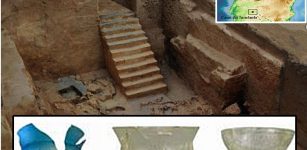 Archaeologists Highlight The Tartessos Culture’s Sustainable Construction Skills
Archaeology | Oct 4, 2024
Archaeologists Highlight The Tartessos Culture’s Sustainable Construction Skills
Archaeology | Oct 4, 2024 -
 Mystery Of The Maya Blue Pigment And Its Unusual Chemical Composition
Ancient History Facts | Mar 23, 2016
Mystery Of The Maya Blue Pigment And Its Unusual Chemical Composition
Ancient History Facts | Mar 23, 2016 -
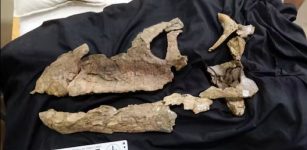 First Near-Complete Sauropod Dinosaur Skull Found In Australia Hints At Ancient Links Between Continents
Featured Stories | Apr 13, 2023
First Near-Complete Sauropod Dinosaur Skull Found In Australia Hints At Ancient Links Between Continents
Featured Stories | Apr 13, 2023 -
 India’s Tradition Of Advanced Metallurgy, Craftsmen And Blacksmiths Is Longer Than Thought
Ancient Technology | Mar 19, 2019
India’s Tradition Of Advanced Metallurgy, Craftsmen And Blacksmiths Is Longer Than Thought
Ancient Technology | Mar 19, 2019 -
 ‘Giants’ Discovered In Ancient Grave In China
Archaeology | Jul 6, 2017
‘Giants’ Discovered In Ancient Grave In China
Archaeology | Jul 6, 2017 -
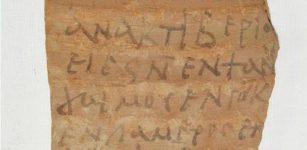 Rare Discovery Of More Than 18,000 Inscribed Pot Sherds Document Life In Ancient Egypt
Archaeology | Jan 31, 2022
Rare Discovery Of More Than 18,000 Inscribed Pot Sherds Document Life In Ancient Egypt
Archaeology | Jan 31, 2022 -
 More Than 10,000 Pre-Columbian Earthworks Remain Hidden Throughout Amazonian Forests
Archaeology | Oct 5, 2023
More Than 10,000 Pre-Columbian Earthworks Remain Hidden Throughout Amazonian Forests
Archaeology | Oct 5, 2023 -
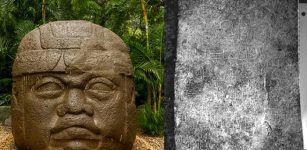 Mystery Of The Controversial Cascajal Block – Oldest Writing In The Americas
Artifacts | Oct 12, 2017
Mystery Of The Controversial Cascajal Block – Oldest Writing In The Americas
Artifacts | Oct 12, 2017 -
 The Invisible Plant Technology Of The Prehistoric Philippines
Archaeology | Jul 1, 2023
The Invisible Plant Technology Of The Prehistoric Philippines
Archaeology | Jul 1, 2023 -
 Evidence Ancient Civilizations Had Knowledge About Planets In Our Solar System Thousand Years Ago
Ancient Mysteries | Mar 10, 2021
Evidence Ancient Civilizations Had Knowledge About Planets In Our Solar System Thousand Years Ago
Ancient Mysteries | Mar 10, 2021 -
 Is A Small Obsidian Artifact Linked To Expedition Searching For A Fabled City Of Gold 470 Years Ago?
Archaeology | Mar 1, 2024
Is A Small Obsidian Artifact Linked To Expedition Searching For A Fabled City Of Gold 470 Years Ago?
Archaeology | Mar 1, 2024 -
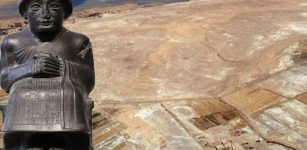 Drone Footage Reveals Ancient Mesopotamian City Lagash Was Made Of Marsh Islands
Archaeology | Oct 14, 2022
Drone Footage Reveals Ancient Mesopotamian City Lagash Was Made Of Marsh Islands
Archaeology | Oct 14, 2022 -
 Ancient City Of Gordium, Gordian Knot And Skeleton In Tumulus Of King Midas
Civilizations | Sep 20, 2018
Ancient City Of Gordium, Gordian Knot And Skeleton In Tumulus Of King Midas
Civilizations | Sep 20, 2018 -
 What Were The Most Important Inca Laws That All Citizens Had To Respect?
Ancient History Facts | Aug 16, 2017
What Were The Most Important Inca Laws That All Citizens Had To Respect?
Ancient History Facts | Aug 16, 2017 -
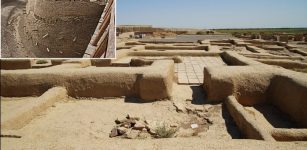 Climate Change, Not Genghis Khan Caused Demise Of Central Asia’s River Civilizations
Archaeology | Dec 17, 2020
Climate Change, Not Genghis Khan Caused Demise Of Central Asia’s River Civilizations
Archaeology | Dec 17, 2020



